It was inevitable. I went to the lake yet again two weekends ago, knowing full well that people come back with parasites. Although I avoided it the last two visits, this time I was not so lucky. I was staying in Panajachel, the town known for giving people parasites. It’s rainy season, prime time for worms to sneak into people’s bodies. And, turns out, you’re supposed to read the signs in your hostel room telling you not to brush your teeth with the sink water. I thankfully did not have an extreme case, but I will still spare you the details. Let’s just say that Pablo (my parasite) and I did not always get along, especially after I ate. This past weekend I took some medicine that supposedly removes the parasites, and I do feel much better. Hopefully, all the pain will disappear in the next couple days, and Pablo and I can part ways with no (well, maybe a few) hard feelings.
Ignoring the fact that I picked up a new friend against my will, the visit to the lake was very enjoyable. My group went on a cultural tour of the surrounding towns and of one of the biggest open-air markets in Latin America, Chichicastenango. On Saturday, we visited three of the 12 pueblos, all of which are named after saints: San Juan la Laguna, San Pedro la Laguna (also known as San Pedro the crazy, since it is a big party town), and Santiago. In San Juan, we saw a chocolate-making company, a textile company, and a Mayan bee farm. We were able to sample and buy many different products: a cacao bean that has been soaked in ethanol and then dried for two days in the sun, resulting in a bean that has the alcohol content of a tequila shot; hats, fanny packs, bags, and scrunchies made by the local women; black honey that tastes like balsamic vinegar and white honey that tastes lemony; and many other chocolatey, cottony, and honey-y products. We then spent a little time at San Pedro before visiting Santiago, which is the home of one of the few synchronized churches in the world. When the Spanish came to colonize the Mayans, they brought with them their Catholic religion. Our Mayan guide told us that, to avoid entirely losing their religion, the Mayans merged their religion with Catholicism. The Church we visited, built in 1547, is one of the few sites in the world where both Catholicism and an indigenous religon are practiced. Leading up to the courtyard of the Church, there is a staircase with 18 steps, representing the 18 months of a Mayan calander, while the staircase that leads up to the Church represents the 20 days in one Mayan month.
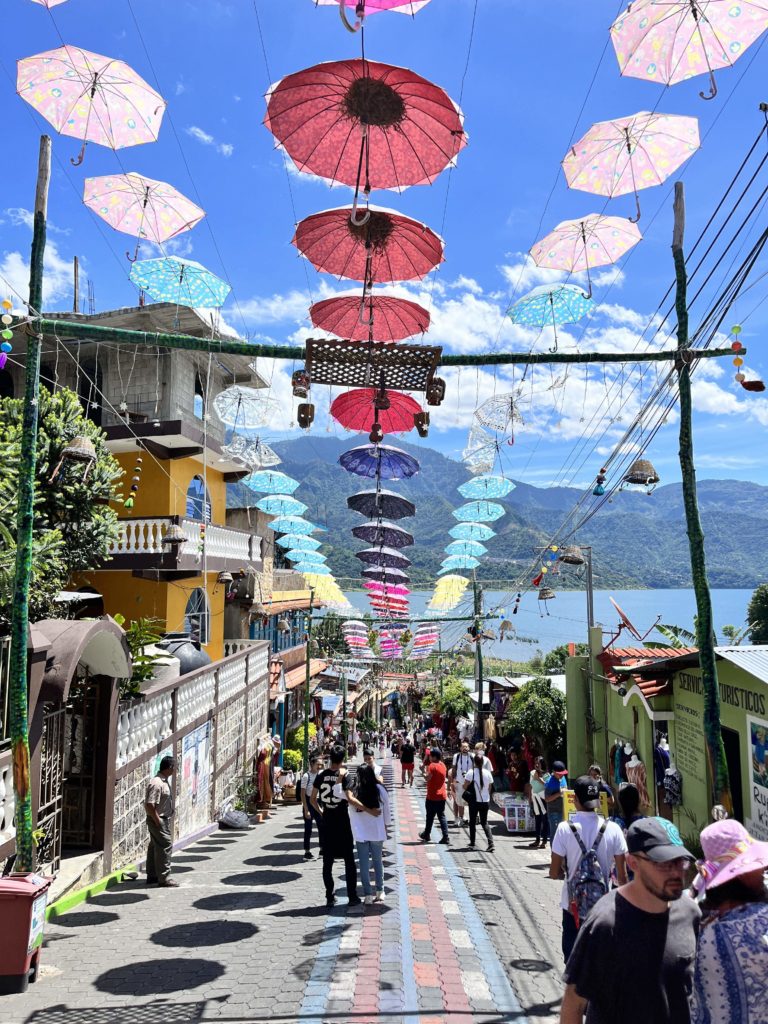
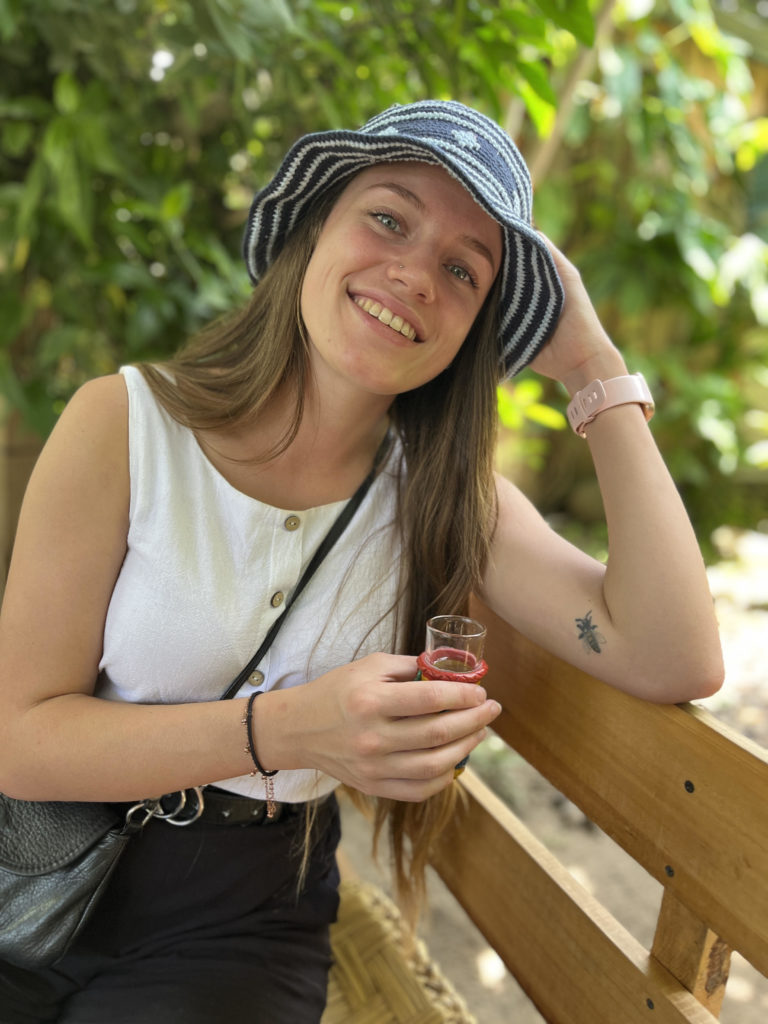
This church is also the site where St. Stanley presided before he was killed in the Guatemalan civil war. A gringo from Oklahoma, St. Stanley came to Guatemala and worked to unite the indigenous people with the Catholic Latinos. He translated the Bible from Spanish to Tz’utujil, one of the 22 Mayan languages in Guatemala, and held Mass in this same language. As the civil war got worse, the government told Padre Apla’s, (“Father Francis,” his affectionate nickname given to him by the indigenous people; there is no equivalent for Stanley in the Tz’utujil, so they called him by his other given name, Francis), that he needed to return to the States. He did so, but quickly felt that he was meant to be with his flock in Guatemala. He returned to Guatemala and was murdered on July 28, 1981. Our guide told us that he, and people like himself who are not Catholic, have a great respect for the man who worked so hard to unite the two groups in Guatemala and refused to abandon his people.
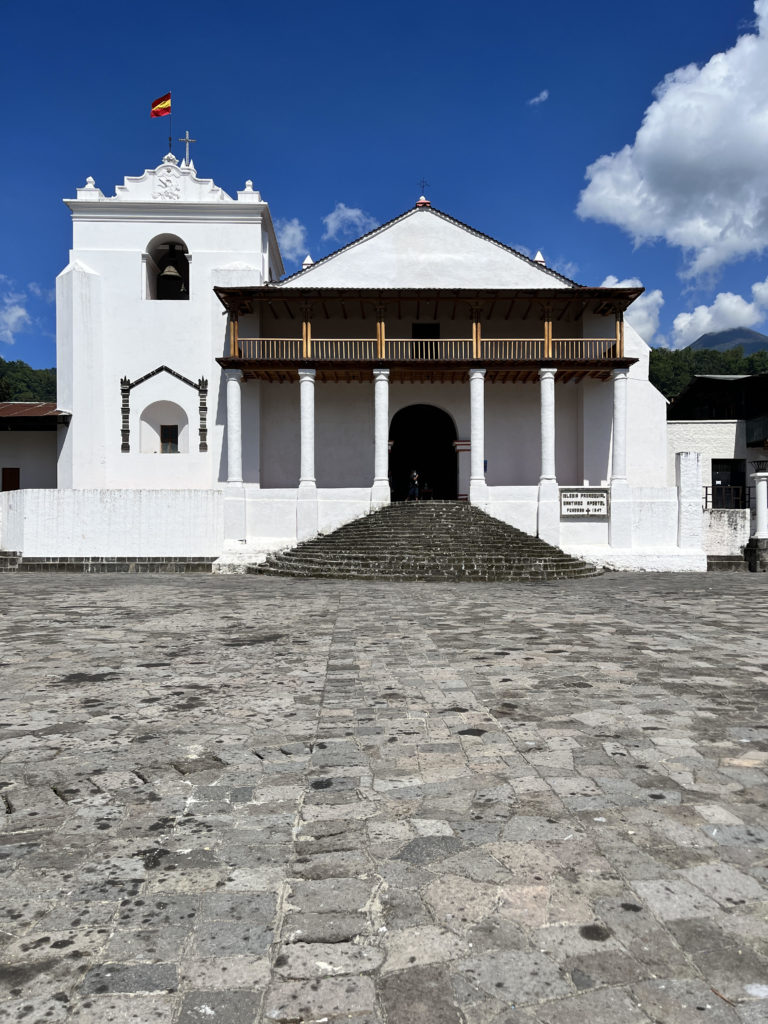
On Sunday, we visited Chichicastenango. I myself felt that I stood out like a sore thumb, being taller and whiter than everyone else swarming the market. I was an easy target for sellers, but I held my own and never bought anything at the original price, instead haggling with the best of them. It really tests my ability to remember Spanish numbers. On Sunday, we also visited the most colorful graveyard I will probably ever seen in my life. All the tombs were painted with bright colors, and some had designs on them. We even saw one with spiderman, painted at the request of the children who are buried there. The graveyard, which contains a mix of Mayans and Catholics, is so colorful because the Mayans want it to celebrate life.
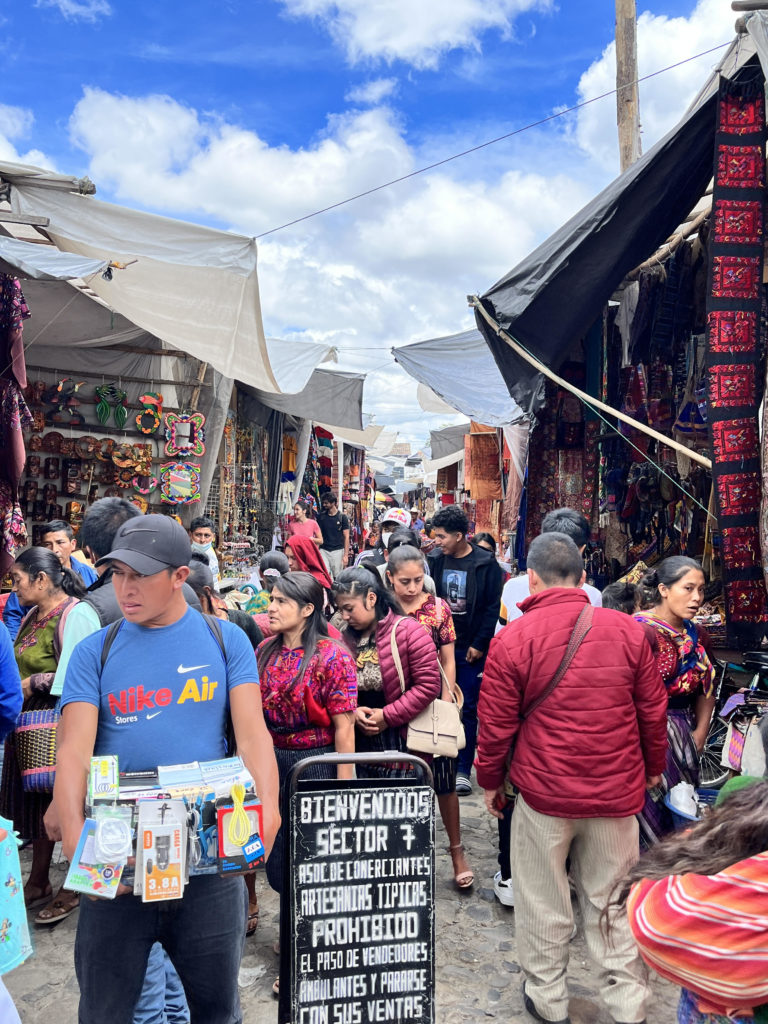
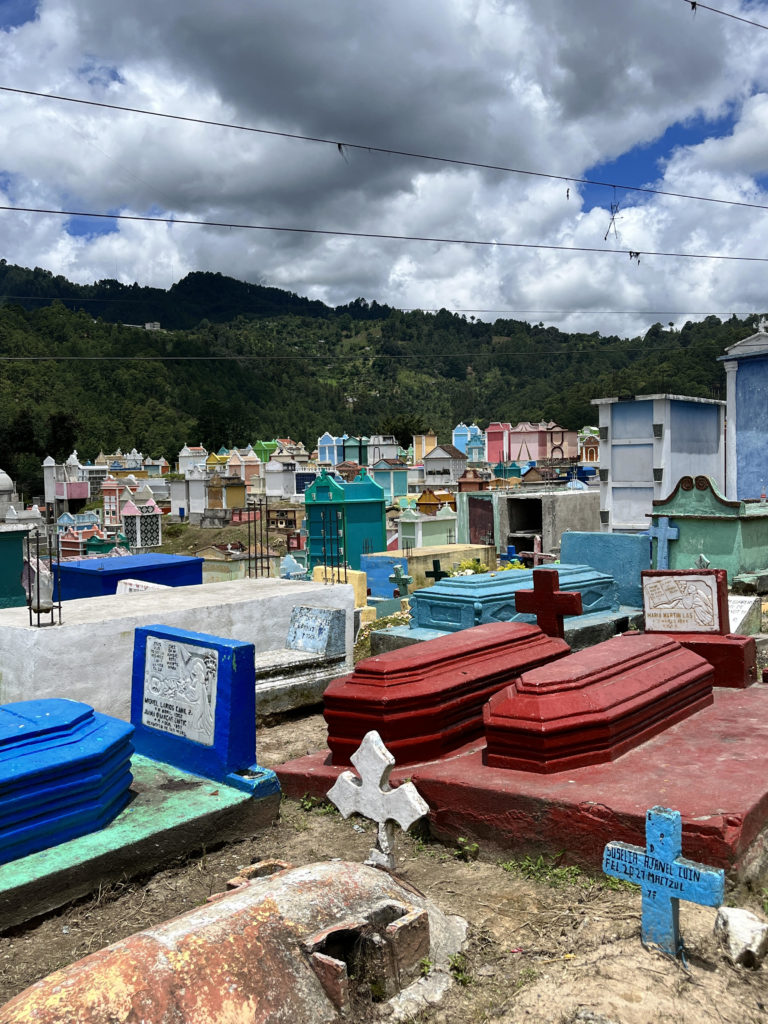
Besides trying to get rid of my unwelcomed guest, Pablo, this weekend, I went to the beach with a group of friends living in my house with me. I once again enjoyed being tossed around by the waves, walking along a the water in the black sand, and spending time with good people. I was able to have some good conversations with my roommate, Mia. Mia is an Aussie in her mid-twenties, and she is a ton of fun. She is really chill and really wild at the same time (which I hear is the typical profile of an Aussie). She and the other Aussie, Richard, both toppled their ATVs that we were racing along the beach, but she at least managed not to break hers. Not only did we break an ATV, but I also knocked down a coconut from a palm tree and broke into it to try the milk and flesh. The coconut water was not my favorite, but the flesh had a good coconut flavor.
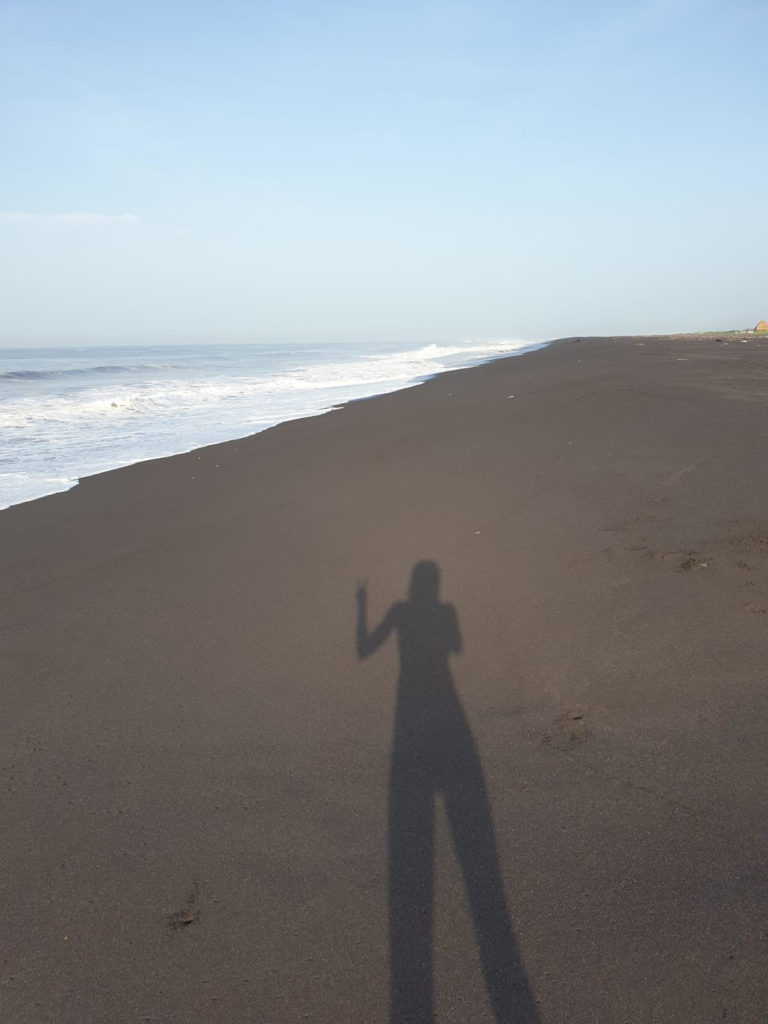
I promised I would explain the picture of me feeding a cow. Last Monday, Guatemala had a holiday celebrating the army. In place of our cancelled classes, I and two of my housemates went to a coffee farm, but we did more than roast and sample the coffee. We ziplined, picked blackberries (that were later turned into an amazing juice), and milked a cow. It was a fun way to spend our day off with my housemates. I have found that the people either elevate or ruin the trips, and I have been lucky enough to have more of the former than latter experience.
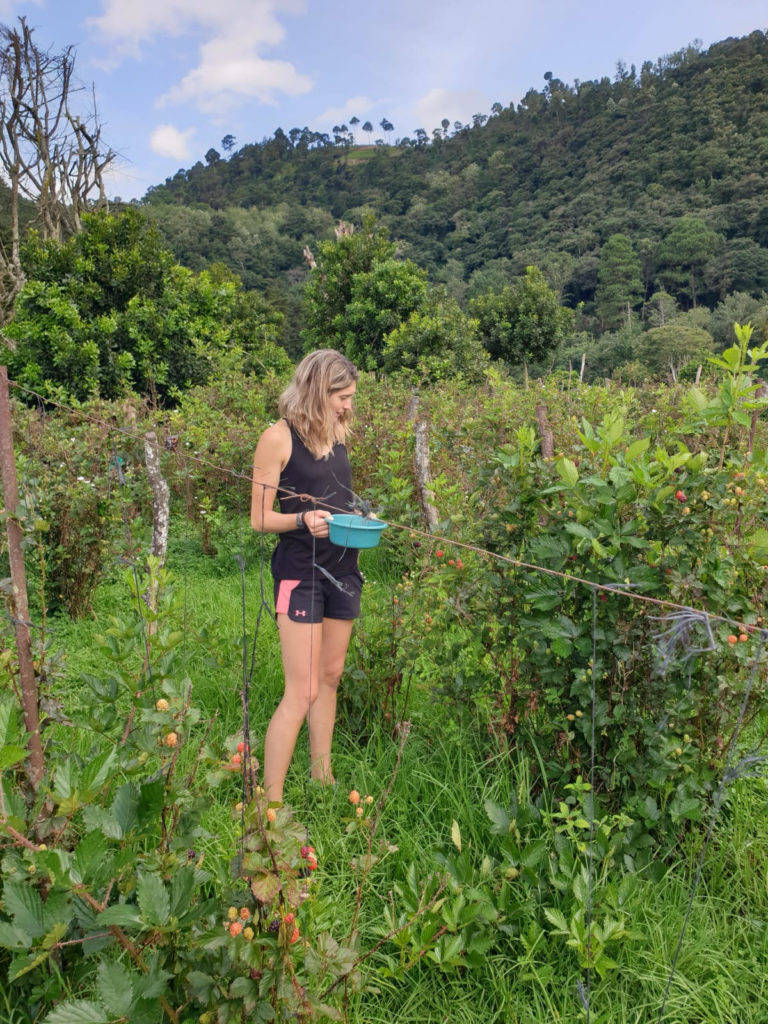
Onto the food! Unfortunately, because Pablo happens to share my excellent taste in food (food that often involves dairy, meat, lost of spices, or higher amounts of sugar), the doctor advised me to eat much more simply this past week. However, there are still some dishes I can share with you (I had the first two before Pablo started staying with me):
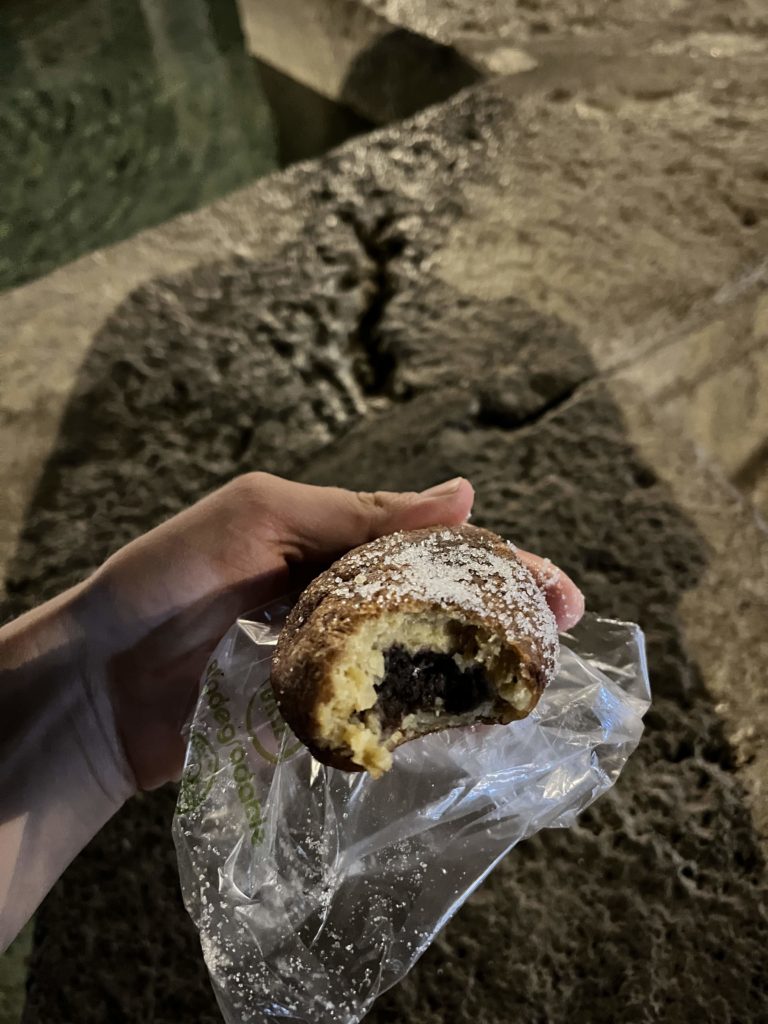
Rellenitos: these are fried plantains filled with a sweet bean paste and dusted with sugar. This dessert reminded me slightly of a donut but mostly of the fried platanos I eat here every chance I get.
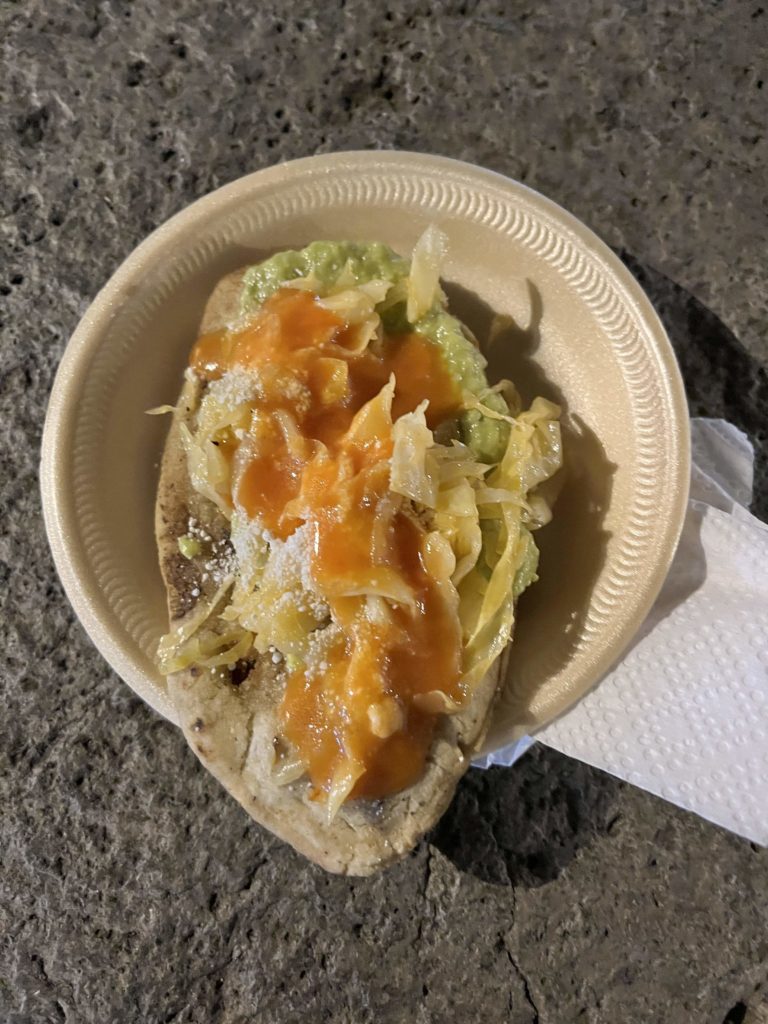
Dobladas: named because they are “folded” (doblado), this masa is filled with meat or veggies and topped with avocado, cabbage, and a salsa. I had mine filled with chicharrones, fried pig’s belly.
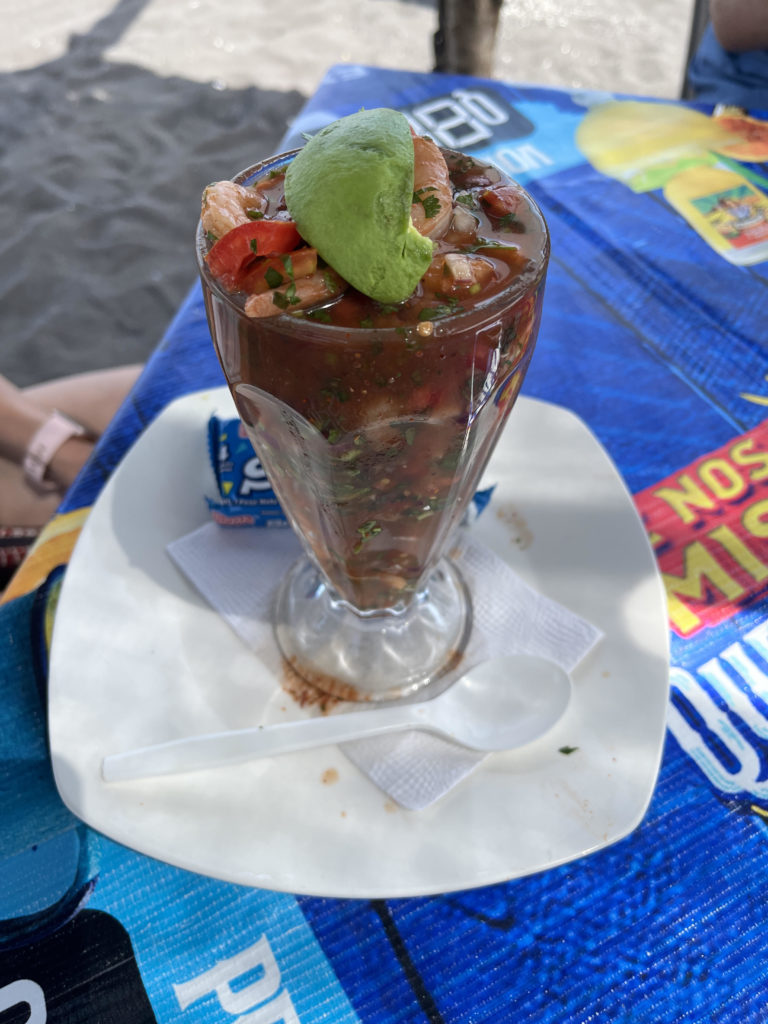
Ceviche: this dish is very popular here. It is a shrimp cocktail with tomatoes, onions, cilantro, lime, and spices. We filled our tortillas with the ceviche next the the beach from which the shrimp were caught, along with the other fish, crab, and shrimp ordered by our group. We had to wait a long time for the food, but the wait was worth the fresh seafood.
It blows me away that I only have two weeks left! My next post will be my last, once I have returned to Colorado. For the rest of my time here, I would like to visit Tikal, the famous Mayan ruins in the north of Guatemala, attend a soccer game with my host family (go Aguacates!–the color of the team is green, so they are called the avocados), and spend time in all my favorite spots in Antigua. I now have a long Spotify playlist of my favorite Spanish songs, friends from all over the world, and a solid foundation on which I can continue studying Spanish. I have loved every minute here, but I will also be happy once I am home. I do think, however, that I could also call this place home, for at least a little while, sometime in the future. I guess we’ll have to see!
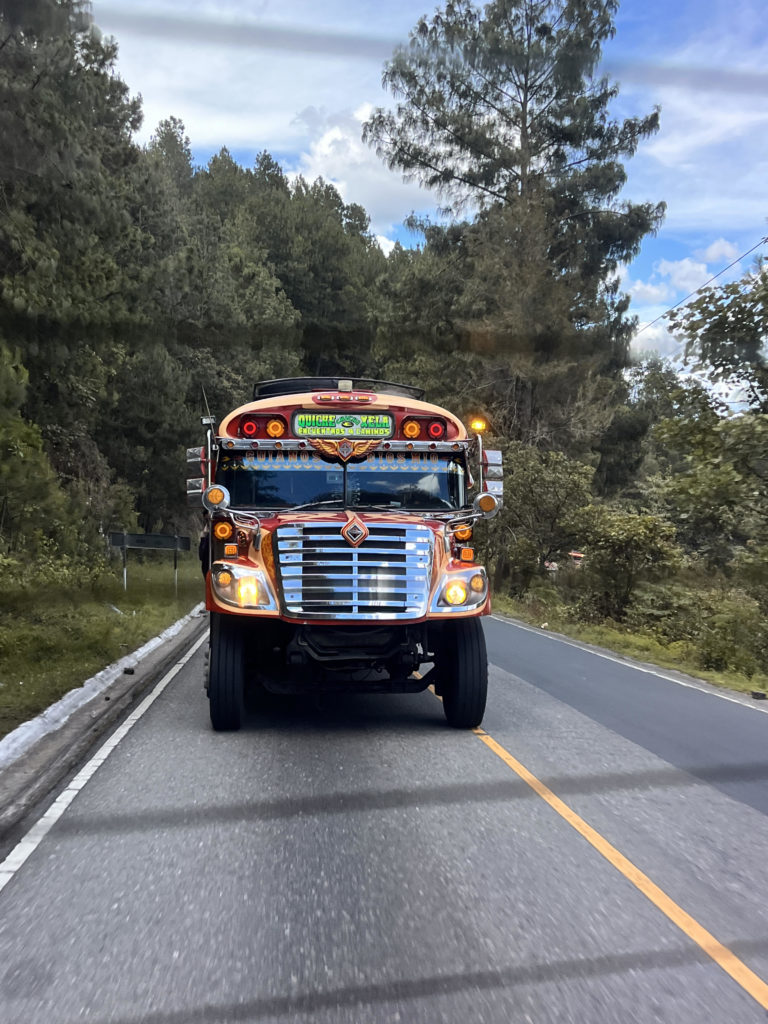
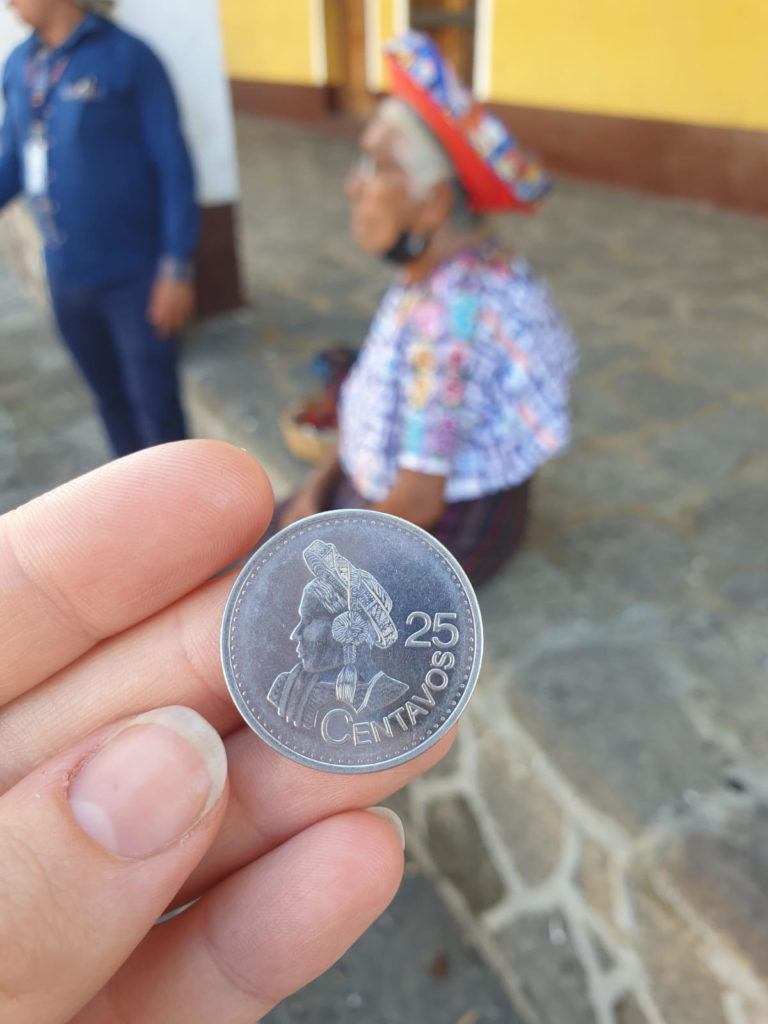
Un abrazo grande,
Julieta